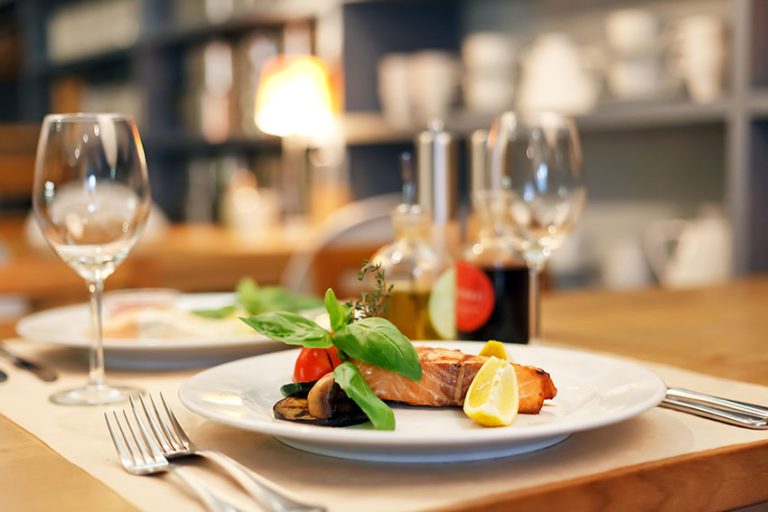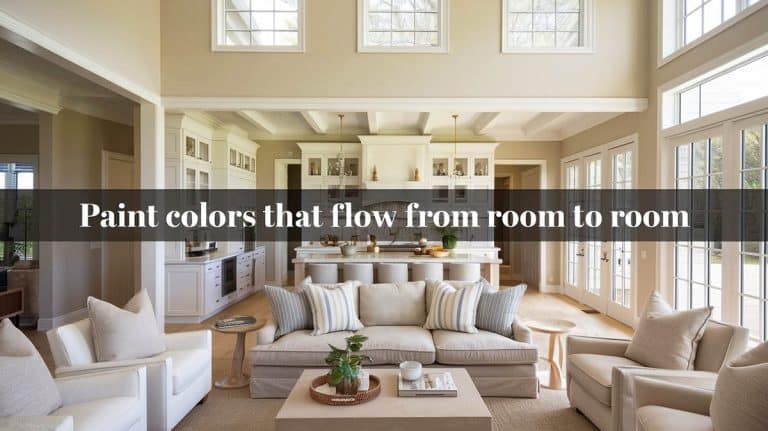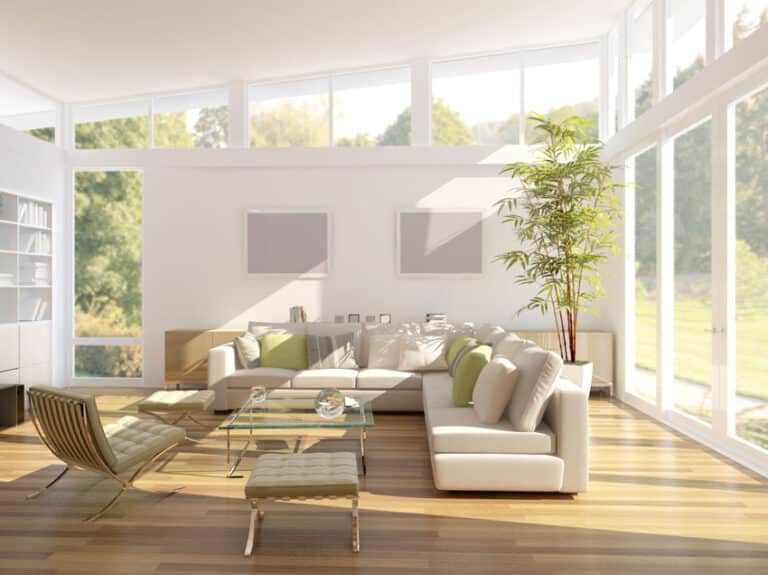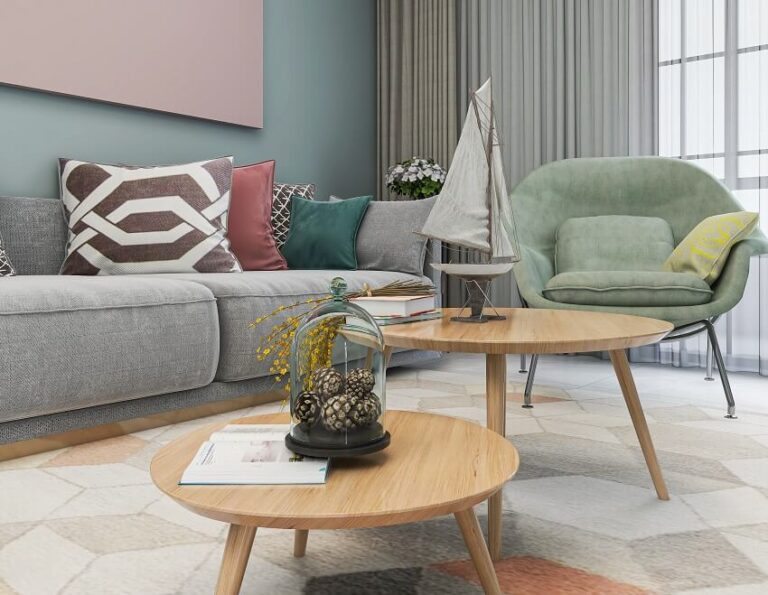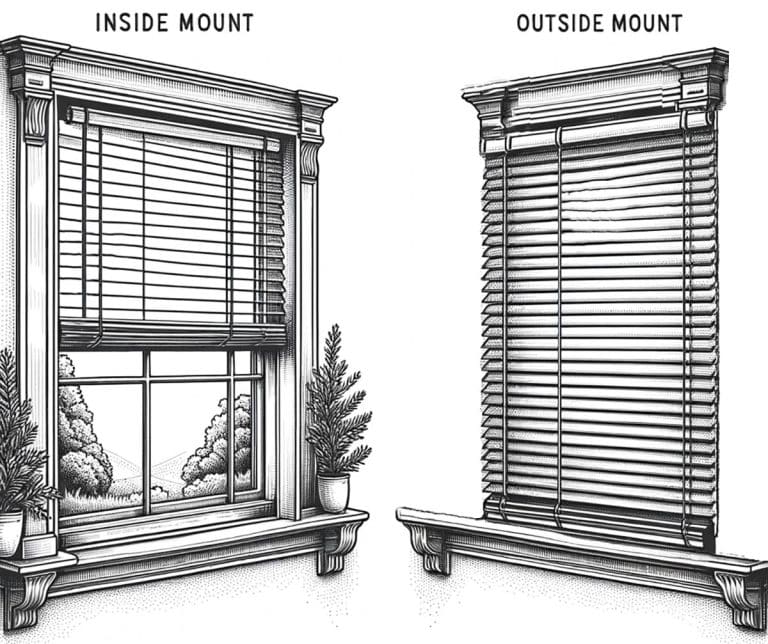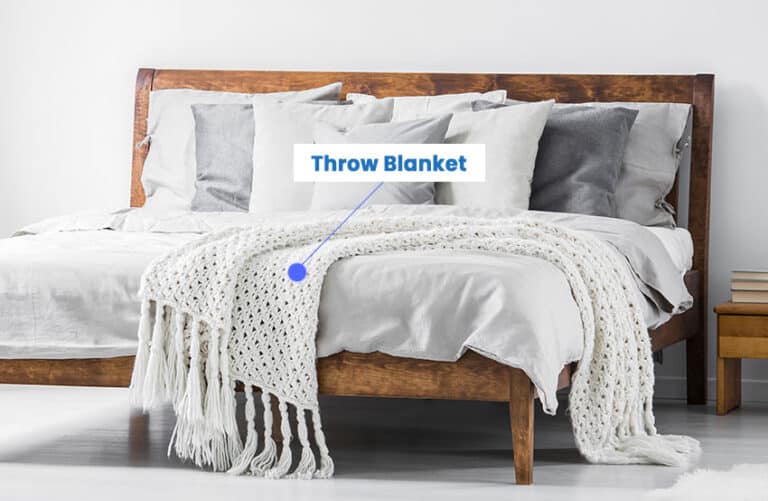Wood Vs Faux Wood Blinds

While it can be tough to tell real wood blinds from faux-type blinds, they’re both a beautiful purchases for your windows. Almost any décor style benefits from the warm, rich look of true wood, including country, traditional, modern, western, and whatever your design preferences are. Wood blinds also complement homes with modern architecture and design.
The versatility of natural wood allows for dark or light finishes that can be custom-matched to the existing furniture. And, according to the room and décor where the blinds are being hung, both make a great fit available in almost any color and style. From natural wood tones and whites to solid colors and patterns, wood and faux wood shades are a smart choice for your windows.
Your choice will depend on the needs of each room and your interior style and décor. Wood blinds add warmth, texture, and natural richness to living rooms, dining rooms, and family rooms. For those who prefer a modern interior design, faux wood screens may be the better option. They come in many window blind colors and are easily customized in different finishes and patterns. Both provide excellent darkening abilities. The slats can be adjusted to close completely, keeping light out or left open a bit for privacy while allowing some light to come through.
Additional factors when comparing faux wood style blinds to real ones include the life expectancy of both. The former tends to last 3 to 5 years, and the latter is closer to 10 to 12 years, all depending on care, use, and maintenance. This helpful guide will help you decide on wood blinds vs. faux wood blinds to find the best one for your home.
What Are Wood Blinds?
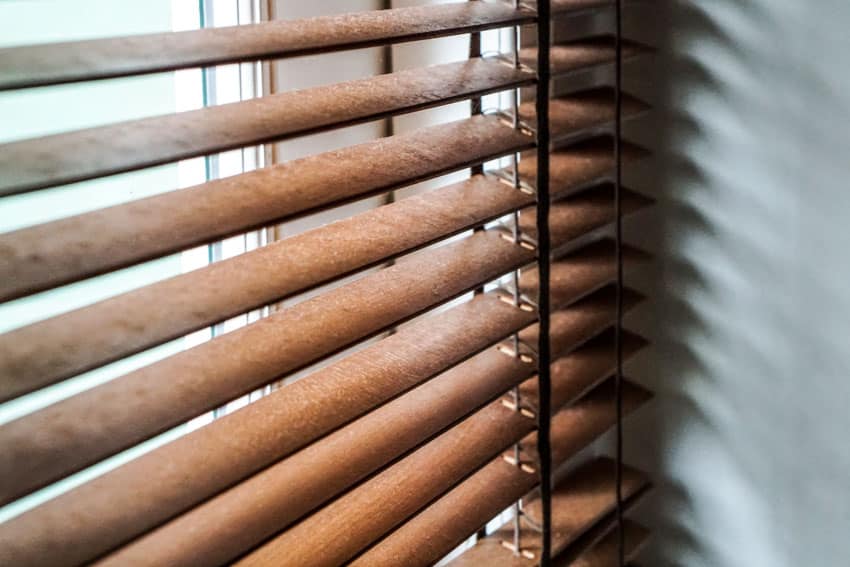
Wood blinds are also known as Venetian blinds and have adorned the windows of family homes for many years. The natural wood slats reflect old-world sophistication and quality craftsmanship to enhance your home or office interior.
These are commonly made from basswood and American hardwoods such as cherry, walnut, oak, and various other hardwoods. A lesser-known tree used for blinds is the Paulownia tree, originating in Southeast Asia. These trees are popular around the world for their rapid growth, growing faster than any hardwood tree species, even in poor soil.
Paulownia trees are easy to reforest and are often used to replace trees on land that were heavily cut. The roots of the Paulownia tree grow deep, allowing it to grow where other trees could not, such as on steep hills, areas with strong winds, and shallow soil.
They are fast-growing trees—up to 20 feet in their first year. Window coverings made from Paulownia are extra light and exceptionally strong, making them advantageous for creating blind slats. The timber of the Paulownia tree has the highest strength-to-weight ratio of all other trees.
Real hardwoods result in lightweight window blinds, and with the sturdiness of most hardwoods, they are better suited for large, wide types of windows. They’re also durable, making them a long-lasting investment.
Wooden Window Blinds Pros And Cons
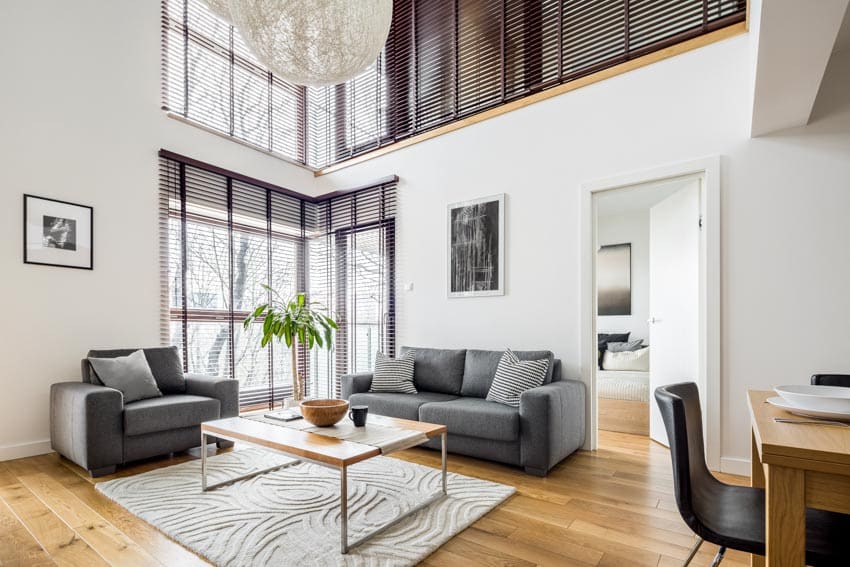
These shades keep cold air out during the winter and air-conditioned air in during the summer. This makes your home more ecologically friendly and reduces utility bills.
Other pros and cons of wooden curtains are listed below.
Pros
• They create a natural and organic look not found with faux wood
• They won’t bow or bend as easily as faux blinds
• Real timber is actually lighter than faux wood
• The lighter weight of these blinds is easier on lift mechanisms
• The commonly used basswood trees used to make blinds are a renewable resource
• They can be stained with any color to match your home décor
• Because these blinds are lighter, they’re easier to operate
• Each slat is removable, making them easy to clean
Cons
• Wooden slats are susceptible to swelling and warping when installed in humid areas of your home, such as the kitchen, laundry room, or bathroom
• High humidity can also cause the slats to crack and sag
• Being exposed to strong sunlight can discolor the blinds
• They aren’t flexible like the faux ones, risking the abuse of children and pets, causing splits and cracks
What Are Faux Type Wood Window Shades?
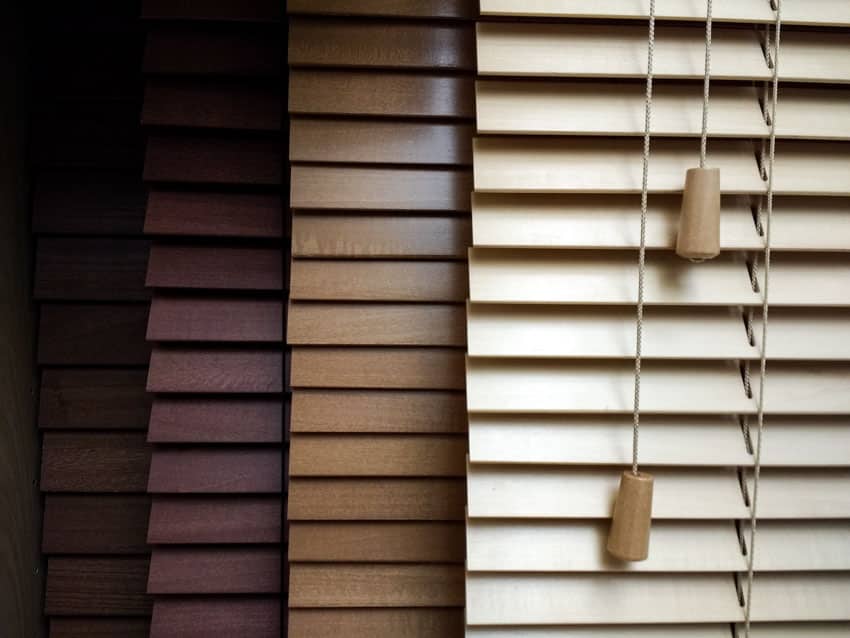
Most homeowners and their guests cannot tell the difference between wood blinds and faux ones unless they inspect them up close. Woodlike window coverings, which are found in many homes, come in a variety of colors, patterns, and finishes.
They work well with almost any interior decor and are always in style. Homes with matching timber-look blinds are more appealing to potential buyers.
What Are Faux Wood Venetian Blinds Made Of?
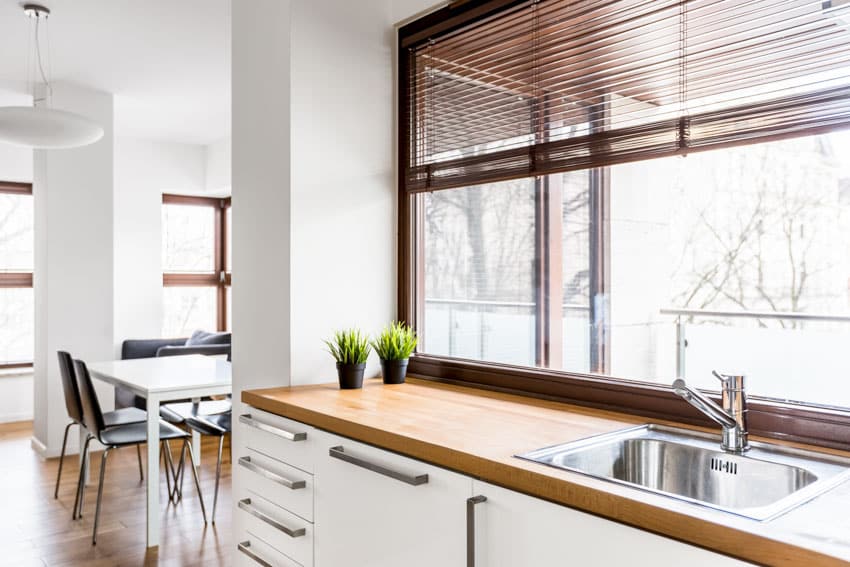
The finished slats can be painted solid colors or imprinted with a grain image. Additional images can be used to create patterns and designs. For a more realistic look, the slats can be finished with an embossed texture mimicking wood grain.
Wood Vinyl Blinds Pros and Cons
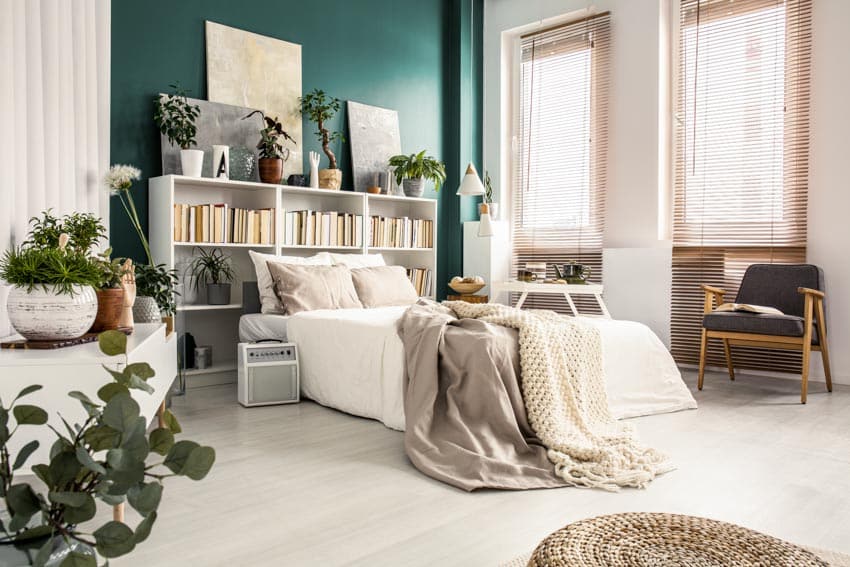
Cleaning them is easy using a feather duster or soft cloth and is resilient against damage from household cleaners. Below are additional pros and cons of faux wood blinds.
Pros
• They are less prone to cracking, sagging, and discoloration
• They can be painted to match your room’s color scheme and easily repainted when your décor changes
• This material is not easily affected by extreme temperatures
• The slats can be removed for cleaning or painting
• Cost an average of 15% less than wooden blinds
• The materials used to make timber-look shades allow them to be more flexible than wood, which in turn protects against warping
• Great for rooms with heavy use
• They hold up well in rooms with high humidity, like laundry rooms, kitchens, and bathrooms. Read more about types of bathroom blinds here
Cons
• They still hold a stigma for some homeowners
• They can be less attractive than natural timber
• The materials used to make composites leave grooves in the surface, making them more challenging to clean than natural wood
• They are much heavier than real ones
Difference Between Vinyl Plastic Wood and Blinds Made of Real Wood
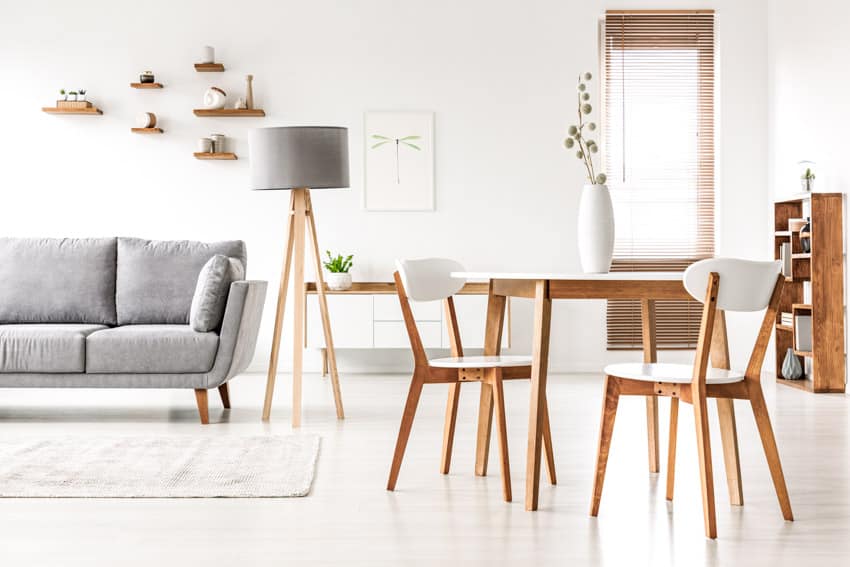
Although faux ones can be painted any color, there is quite an array of colored stains to match the interior design.
Both, when closed, provide a barrier against outdoor air temperatures, but wooden blinds provide a much higher level of insulation, keeping utility bills lower.
However, these need careful cleaning to avoid damage, staining, or warping, but the faux type can hold up to almost all household cleaners.
They come in several slat sizes: 1 inch, 2 inches, and 2 ½ inches. Larger slats provide a more spacious view when open, and smaller slats give more privacy even when open. Slat sizes also allow homeowners to fit the blinds for their windows better.
Larger slats are best for bigger and wider windows, and smaller slats are best for narrow or small windows. Wood-like curtains typically come in only two sizes, 2 inches and 2 ½ inches.
They can measure up to 102 inches wide, while wooden blinds can only be made up to 94 inches wide, making the faux type better for wider and larger windows.
Vinyl Fake Wood Vs Wooden Blinds Cost
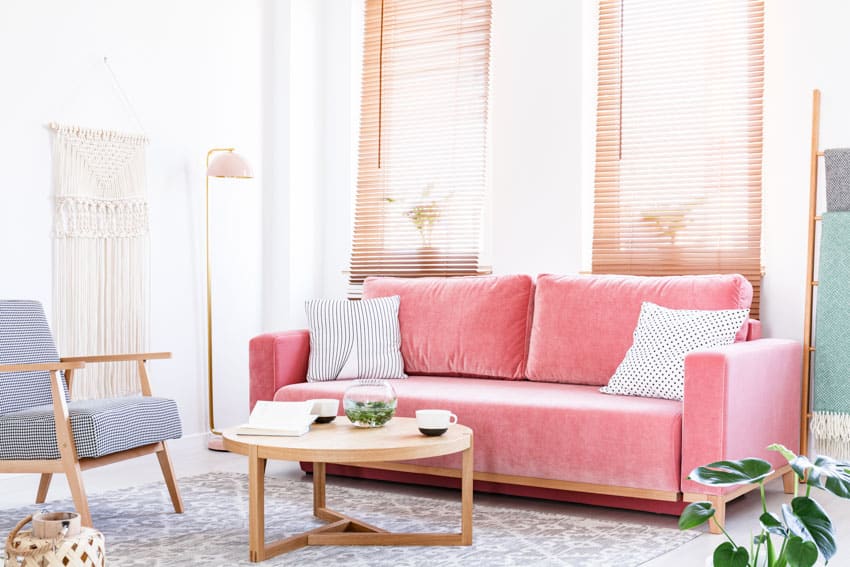
When factoring in the more expensive price of real wood blinds, homeowners may consider that real ones will last longer than faux wood, making the extra cost actually worth spending. See the chart below for average comparisons.
| Slat Size/Blind Width | Faux Wood Blinds | Real Wood Blinds |
| 2 inches/26 inches | $29.57 | $34.67 |
| 2 inches/30 inches | $37.55 | $47.99 |
| 2 inches/42 inches | $61.16 | $76.91 |
Are Wooden Type or Vinyl Type Blinds Better?
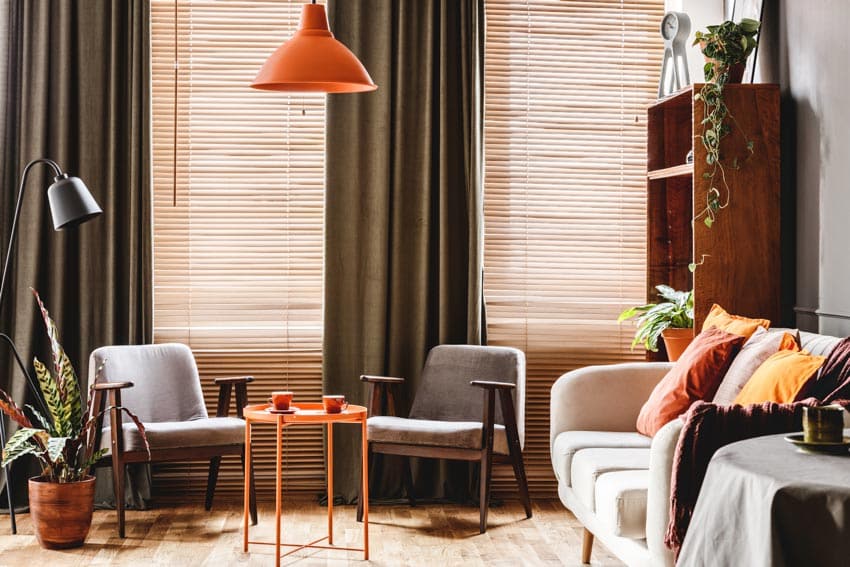
However, wood types of window blinds can be painted, but you lose the beauty of the graining and texture. High traffic areas of your home are most fitted for woodlike style blinds that resist the possible damages from a runaway soccer ball or air darts the kids were playing with or other activities.
If your home is located on or near the beach or a lake, faux wooden shades are going to last longer due to their ability to combat the effects of moisture exposure. Those made from real wood can also be used in humid areas, but only if they’re properly oiled and taken care of, and the maintenance will be ongoing to keep them from swelling and then warping or cracking.
the faux ones are made with heavier and thicker slats that will pile up at the top, making a higher stack. This prevents enough light from outside for some rooms and also makes the shades much heavier.
For large and expansive windows, faux coverings would operate better if the window treatments were divided into two or three sets instead of one large blind. For deco purposes, both faux timber blinds and real ones come available with decorative fabric tapes to enhance a room’s design.
Given the heavier weight of faux timber blind slats, they have more “ladders,” which are the cords the slats sit on. The ladders are closer together on faux wood sunshades than real wood ones, which may deter the aesthetics of the window shades. And the extra weight of the faux material may cause cords to break, which can be difficult to replace.
Wooden blinds do possess an authentic appeal and offer the natural look of timber. Composite woodlike shades that are made well can be deceivingly similar to wood but will show their non-timber origins when inspected up close.
Even though the name faux wood conjures ideas of an inferior blind, it can be a superior product to other types of blinds. Choosing between faux wooden ones and those made of real timber is more of a personal choice, and there are numerous options: colors, hardware, stain hue, sizes, and style.
Keep in mind the location and décor where you plan on hanging your window treatments and armed with the information in this guide, you’re ready to make the best decision for your home.
See more related content in our article about the best alternatives to blinds on this page.

